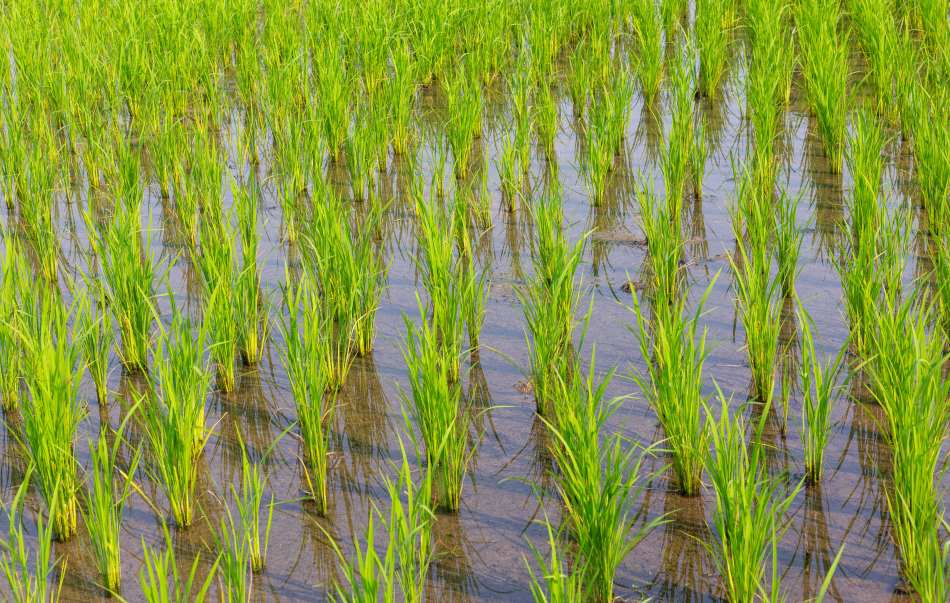Climate change amplifies displacement-inducing disasters
A study published in Frontiers in Climate reveals that climate change has influenced the intensity of disasters responsible for internal displacement.
By analyzing global records of flood- and storm-induced displacements between 2017 and 2021, researchers found that climate change has, on average, increased precipitation by 3.7% while slightly reducing wind speeds by 1.4%. However, the variability among individual events remains significant, with precipitation changes ranging ±28.6% and wind speed changes ±6.6%.
These findings highlight the ongoing interplay between natural variability and climate change, cautioning against overemphasizing the latter’s role in displacements. The study emphasizes the importance of addressing socio-economic vulnerabilities and development deficits, which determine whether weather hazards escalate into disasters.
Journal Reference:
Beyer R, Miranda Espinosa MT, Ponserre S, Mengel M and Milan A, ‘Heterogeneous effects of climate change on displacement-inducing disasters’, Frontiers in Climate 6:1260028 (2024). DOI: 10.3389/fclim.2024
Article Source: Frontiers
The dual benefits of reducing sugar consumption
A new study published in Proceedings of the National Academy of Sciences (PNAS) highlights the environmental and social opportunities of reducing global sugar consumption. As the world’s largest crop by mass, sugar production has significant health and ecological impacts.
The study explores alternatives such as redirecting sugar to biofuels, bioplastics, or microbial proteins and repurposing sugar land for food crops or rewilding. These approaches could yield considerable environmental and public health benefits. However, transitioning to sustainable sugar use requires integrated policies addressing environmental, economic, and health aspects.
The study suggests international cooperation, including compensatory mechanisms for sugar producers, as critical to overcoming political and economic challenges associated with reducing sugar reliance.
Journal Reference:
A. Shepon, Z. Sun, T. Makov, P. Behrens, ‘The environmental and social opportunities of reducing sugar intake’, Proceedings of the National Academy of Sciences 121 (48) e2314482121 (2024). DOI: 10.1073/pnas.2314482121
Article Source: PNAS
Targeting subsidies to meet net zero goals
Research from the University of Exeter, published in Proceedings of the National Academy of Sciences, proposes a fundamental shift in land-use subsidies to enhance environmental outcomes and taxpayer value.
Current flat-rate subsidies for tree planting incentivize afforestation in areas unsuitable for carbon sequestration, potentially increasing greenhouse gas emissions. The study demonstrates that adopting a ‘Natural Capital’ approach – prioritizing areas with high environmental and recreational value – can more effectively meet the UK’s Net Zero 2050 targets.
Professor Ian Bateman, Director of the Land, Environment, Economics and Policy Institute at the University of Exeter Business School, said: “The flat-rate payment approach to the implementation of policy objectives is so globally commonplace that its relative inefficiency goes unnoticed. This study lays these failings bare and shows that the decision-making approach adopted to implement policy can have a very highly substantial impact on the effectiveness of that policy.
“By targeting public money to those places it has its greatest benefits we can address climate change, biodiversity loss and food security, and hugely improve value for money to the taxpayer. This is no minor technical issue; if different approaches yield different results, then how we make decisions changes the decisions we make.”
This approach could enhance biodiversity, public access to green spaces, and carbon storage while delivering significantly higher returns for public investment.
Journal Reference:
I.J. Bateman, A. Binner, E.T. Addicott, B. Balmford, F.H.T. Cho, G.C. Daily, A. De-Gol, S. Eisenbarth, M. Faccioli, H. Ferguson-Gow, S. Ferrini, C. Fezzi, K. Gannon, B. Groom, A.B. Harper, A. Harwood, J. Hillier, M.F. Hulme, C.F. Lee, L. Liuzzo, A. Lovett, M.C. Mancini, R. Matthews, J.I.L. Morison, N. Owen, R.G. Pearson, S. Polasky, G. Siriwardena, P. Smith, P.P. Snowdon, P. Tippett, S.H. Vetter, S. Vinjili, C.A. Vossler, R.T. Watson, D. Williamson, B.H. Day, How to make land use policy decisions, ‘Integrating science and economics to deliver connected climate, biodiversity, and food objectives’, Proceedings of the National Academy of Sciences 121 (49) e2407961121 (2024). DOI: 10.1073/pnas.2407961121
Article Source: University of Exeter
Image search algorithms shape climate change perception
Internet image search results can subtly influence how people perceive climate change, reflecting and shaping public opinion across countries.
A study published in Nature Climate Change analyzed the imagery produced by Google Image Search for terms like “climate change” in 49 nations. The research revealed that the images largely mirrored local attitudes toward climate change rather than objective environmental risks.
For example, in countries with higher climate concern, the images were emotionally impactful, often depicting stark realities of climate disasters. These visual cues were found to correlate with stronger public support for climate action.
Further experiments demonstrated that using evocative and reality-based climate imagery in search results significantly increased awareness and support for policies addressing climate change. Researchers emphasized that improving the algorithms behind image searches could play a critical role in encouraging global collective action.
By ensuring these algorithms present a balanced yet impactful view of climate realities, platforms could contribute to fostering deeper understanding and engagement.
Journal Reference:
Berkebile-Weinberg, M., Gao, R., Tang, R. et al. ‘Internet image search outputs propagate climate change sentiment and impact policy support’, Nature Climate Change (2024). DOI: 10.1038/s41558-024-02178-w
Article Source: Stanford University
Other climate articles published this week
A comparative study of mono ethylene glycol economic production via different techniques (Shehata, W., Nady, T., Gad, F. et al. Scientific Reports 14, 28375 (2024) | DOI: 10.1038/s41598-024-77713-y)
Spatial heterogeneity of human settlements suitability from multidimensional perspectives in 31 provincial capital cities of China (Luo, X., Luan, W., Yang, J. et al. Humanities and Social Sciences Communications 11, 1562 (2024) | DOI: 10.1057/s41599-024-04093-z)
Dry soil moisture on the Tibetan plateau drives synchronous extreme heatwaves in Europe and East Asia (Jiang, J., Liu, Y., Meng, J. et al. npj Climate and Atmospheric Science 7, 281 (2024) | DOI: 10.1038/s41612-024-00831-x)
Bioelectrocatalytic carbon dioxide reduction by an engineered formate dehydrogenase from Thermoanaerobacter kivui (Liu, W., Zhang, K., Liu, J. et al. Nature Communications 15, 9962 (2024) | DOI: 10.1038/s41467-024-53946-3)
Time persistence of climate and carbon flux networks (Qing, T., Wang, F., Li, Q. et al. Communications Physics 7, 372 (2024) | DOI: 10.1038/s42005-024-01862-9)
Habitat suitability models reveal extensive distribution of deep warm-water coral frameworks in the Red Sea (Nolan, M.K.B., Marchese, F., Purkis, S.J. et al. Communications Earth & Environment 5, 709 (2024) | DOI: 10.1038/s43247-024-01830-9)
Future land use maps for the Netherlands based on the Dutch One Health Shared Socio-economic Pathways (Dellar, M., Geerling, G., Kok, K. et al. Scientific Data 11, 1237 (2024) | DOI: 10.1038/s41597-024-04059-5)
Efficient CO2 adsorption by deoiled flaxseed hydrochar (Arefizadeh, M., Behvandi, D., Shahhosseini, S. et al. Scientific Reports 14, 28306 (2024) | DOI: 10.1038/s41598-024-78177-w)
Climate change scenarios forecast increased drought exposure for terrestrial vertebrates in the contiguous United States (van den Bosch, M., Costanza, J.K., Peek, R.A. et al. Communications Earth & Environment 5, 708 (2024) | DOI: 10.1038/s43247-024-01880-z)
The key role of forest disturbance in reconciling estimates of the northern carbon sink (O’Sullivan, M., Sitch, S., Friedlingstein, P. et al. Communications Earth & Environment 5, 705 (2024) | DOI: 10.1038/s43247-024-01827-4)
Photosynthetic efficiency and water retention in okra (Abelmoschus esculentus) contribute to tolerance to single and combined effects of drought and heat stress (Asante, J., Opoku, V.A., Hygienus, G. et al. Scientific Reports 14, 28090 (2024) | DOI: 10.1038/s41598-024-79178-5)
Effects of climate and forest development on habitat specialization and biodiversity in Central European mountain forests (Richter, T., Geres, L., König, S. et al. Communications Biology 7, 1518 (2024) | DOI: 10.1038/s42003-024-07239-6)
Landscape patterns in stand-replacing disturbances across the world’s forests (Acil, N., Sadler, J.P., Senf, C. et al. Nature Sustainability (2024) | DOI: 10.1038/s41893-024-01450-3)
Landscape heterogeneity buffers the impact of an extreme weather event on wildlife (Prugh, L.R., Lundquist, J.D., Sullender, B.K. et al. Communications Biology 7, 1515 (2024) | DOI: 10.1038/s42003-024-07195-1)
Featured image credit: kjpargeter | Freepik




